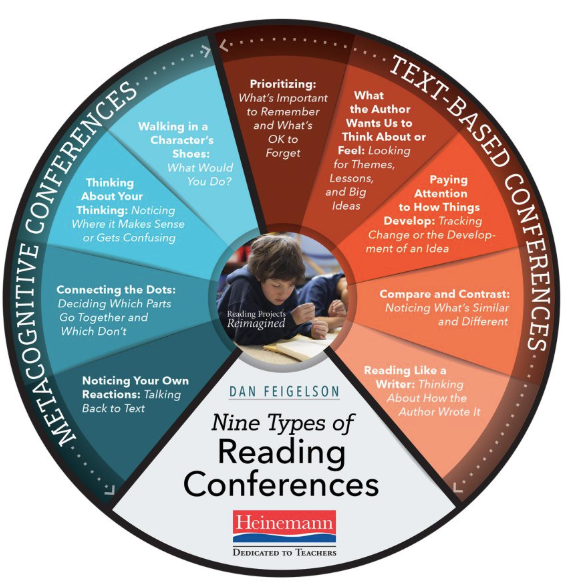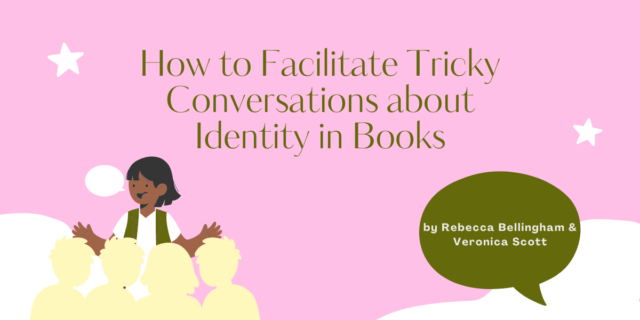
Welcome to the Heinemann Professional Development Professional Learning Community (PLC) series. Each month, we'll share a post designed to provoke thinking and discussion through a simple framework, incorporating mini-collections of linked content.
Use these as learning modules during your professional development time, whether in a team, a professional learning community (PLC), or on your own!
♦ ♦ ♦ ♦
by Jaclyn Karabinas
![]()
Connect
Have you ever been in a conversation where you felt like people were only listening to respond with their own story, instead of listening to understand yours?
![]()
Consider
When we work with students each day, many things come through the door with them that we cannot ignore as we carry out our plans for the day, interact with students, and implement teaching structures.
Keep this guiding question in mind as you work through this learning module: What classroom structures need to be in place that allow time for us to listen to (and learn from) students?
![]()
Educate
When people are in conversation, they bring their identities with them, which will largely influence the way they approach conversation, conflict, and listening to understand instead of respond. In this video blog, author and educator Sara Ahmed talks about where to start—with kidwatching, listening with your whole heart, and centering their identities.
![]()
Reflect
Have a conversation with colleagues about what it looks like and sounds like (both the joys and challenges) to center the identities of the students in your class. If you don’t have colleagues to discuss this with at the moment, allow yourself time for a quick write about this. Need a sentence starter? Try this: When my students enter the classroom, they know/can/will/sometimes/...![]()
Practice
In her book Teaching Talk (2017) author Kara Pranikoff says that “Conversation is the currency of the world.” As students learn that talk—about themselves, about their learning, about their worlds—is welcome in the classroom, we as teachers need to practice listening to learn how students approach conversation.
Read the excerpt from Kara’s book where she gives examples of how to listen carefully to students and use your notes to inform your instructional plans.
In it she explains, “...it’s imperative that large parts of the lessons are actually captured verbatim—through transcription or audio or video recording—so that you can analyze the content of the talk: the questions asked, your response to student comments, and the implicit and explicit ways ideas are encouraged to gather steam or guide the thinkers in the room to come to conclusions…”.
![]()
Extend
Find a time to audio-record conversation in your classroom for the purpose of analyzing the “content of the talk” to inform your instruction and interactions with students. This can be done quickly with your phone. Listen to the recordings with colleagues so you can all benefit from hearing the various student conversations and the perspectives from colleagues that accompany the recording.
![]()
Refine
Dig further into the guiding question: What classroom structures need to be in place that allow time for us to listen to (and learn from) students?
Is conferring a regular part of your classroom practice? While we often think of conferring in reading or writing, conferring in all content-areas gives us an opportunity to listen to what an individual student has to say about their thinking in that moment, without the pressure of a large group awaiting a response or interrupting.
Take a look at the “umbrella categories” from author Dan Feigelson that can help bring focus to the kinds of questions we can ask to hear more student thinking. (You can read more explanations about those here.) How can you use this approach not only in reading but in getting to know your students as learners, writers, mathematicians, people?

![]()
Act
We’ve just worked through three ways to center listening to students in your classroom structures: centering their identities, recording conversations, and conferring with individual students.
Where will you begin? Which practices already are a regular part of your day? Choose one to explore further and make it a professional goal for the next month. Be sure to reflect and talk with colleagues about what you learned as you incorporated more listening to students in your day.
For Further Reading:
- Heinemann Blog: Video | Sara Ahmed on Keeping the Focus on the Kids
- Heinemann Blog: Video | Carl Anderson on Inviting Students to Talk About Their Writing


